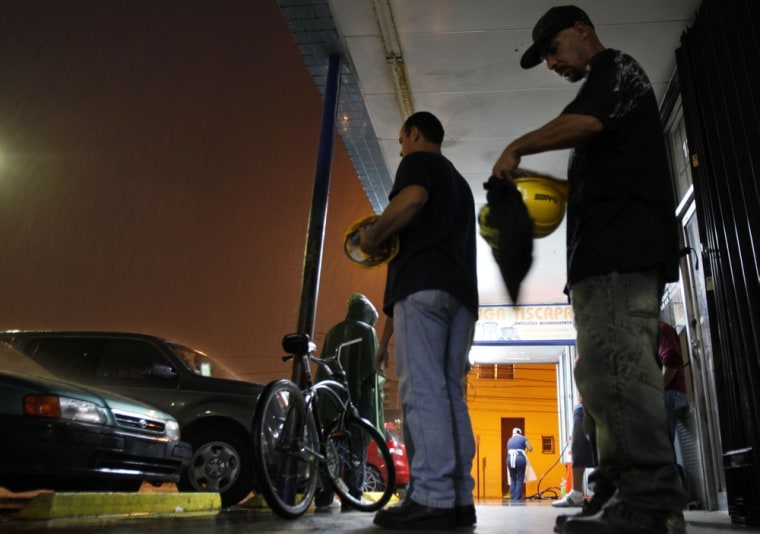The number of Americans signing up for unemployment benefits dropped to the lowest level in two months, an encouraging sign that companies aren't resorting to deeper layoffs even as the U.S. economy has lost momentum.
The Labor Department reported Thursday that new claims for unemployment aid plunged last week by a seasonally adjusted 27,000 to 451,000. Economists had predicted a much smaller decline of just 2,000.
In a second hopeful sign, the government said the trade deficit narrowed significantly in July as exports climbed to the highest level in nearly two years. The narrower gap reflected big gains in exports of U.S.-made airplanes and other manufactured goods. Imports declined.
Together, the two reports eased fears that the economy might slide back into recession.
"At the moment, we can rule out a double-dip for the economy," said Chris Rupkey, chief economist at Bank of Tokyo-Mitsubishi. "The economy is not out of the woods with today's data, but things look better than they have in several week, and there is no danger of a new downturn in activity."
On Wall Street, the news lifted the market's main stock indexes.
Concerns about a possible new recession had arisen after a batch of downbeat reports in August. For example, new applications for jobless benefits shot past the half-million mark in mid-August, the highest level since November. Since that spike, though, they have drifted lower. New filings for benefits are now at their lowest level since July 10.
Meanwhile, the four-week moving average of new claims, which smooths out weekly fluctuations, also fell last week, dropping by 9,250 to 477,750. So did the number of people continuing to draw unemployment aid.
Even with latest decline, new filing for jobless benefits are still much higher than they would be if the economy were healthy. When the economy is growing strongly and companies are hiring, requests for unemployment benefits fall below 400,000.
The July trade deficit fell 14 percent to $42.8 billion, the Commerce Department said. That was much lower than economists had forecast. The lower trade deficit should give a boost to overall economic growth.
Still, near double-digit unemployment is a political headache for President Barack Obama and his Democrat party with the congressional midterm elections just months away.
Obama, in an interview with ABC News, conceded that if the midterm election turns out to be mostly a referendum on the economy, "we're not going to do well."
Last week, the government reported that the unemployment rate ticked up a notch to 9.6 percent in August from 9.5 percent in July, as the number of jobseekers swamped the number of job openings. Private employers in August added a net total of only 67,000 jobs in August. Job gains would need to be more than three times that to drive down the unemployment rate.
The unemployment rate has exceeded 9 percent for 16 straight months and is likely to extend that streak into next year.
Without more jobs, consumers are likely to spend cautiously, which would keep the economy mired in its slow-growth rut.
The economy's growth has slowed sharply from earlier this year as the impact of the government's stimulus package fades. Companies are wary about stepping up hiring because they are worried about their sales and whether the economy will continue to lose momentum. But in recent weeks, companies have shied away from resorting to even deeper layoffs.
Thursday's report showed the number of Americans continuing to draw unemployment aid dipped by 2,000 to 4.5 million, the lowest since late June.
That, however, doesn't include millions of people who are receiving extended benefits under emergency programs enacted by Congress during the recession. More than 5 million people were on the extended benefit rolls during the week of Aug. 28, the latest data available. .
